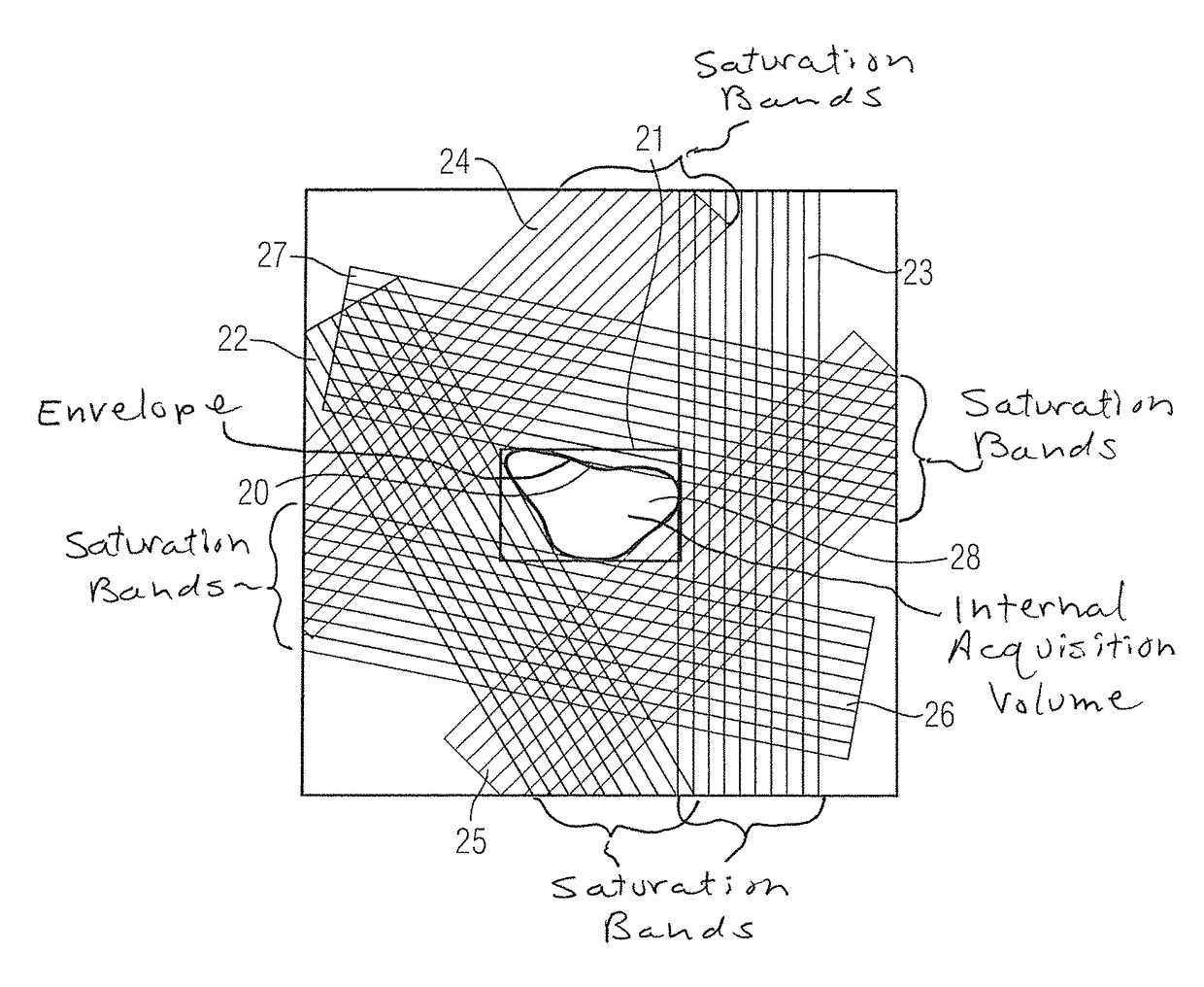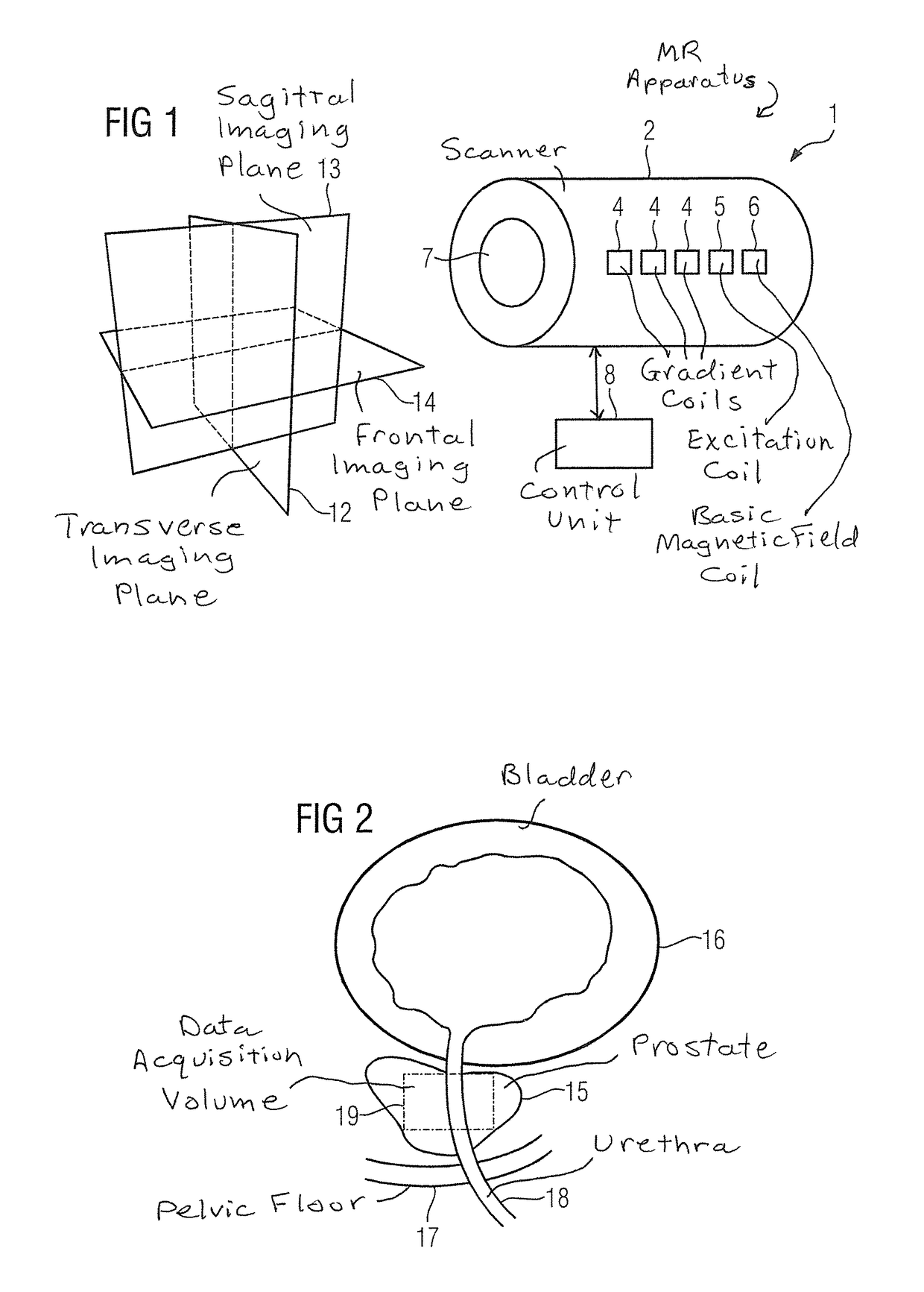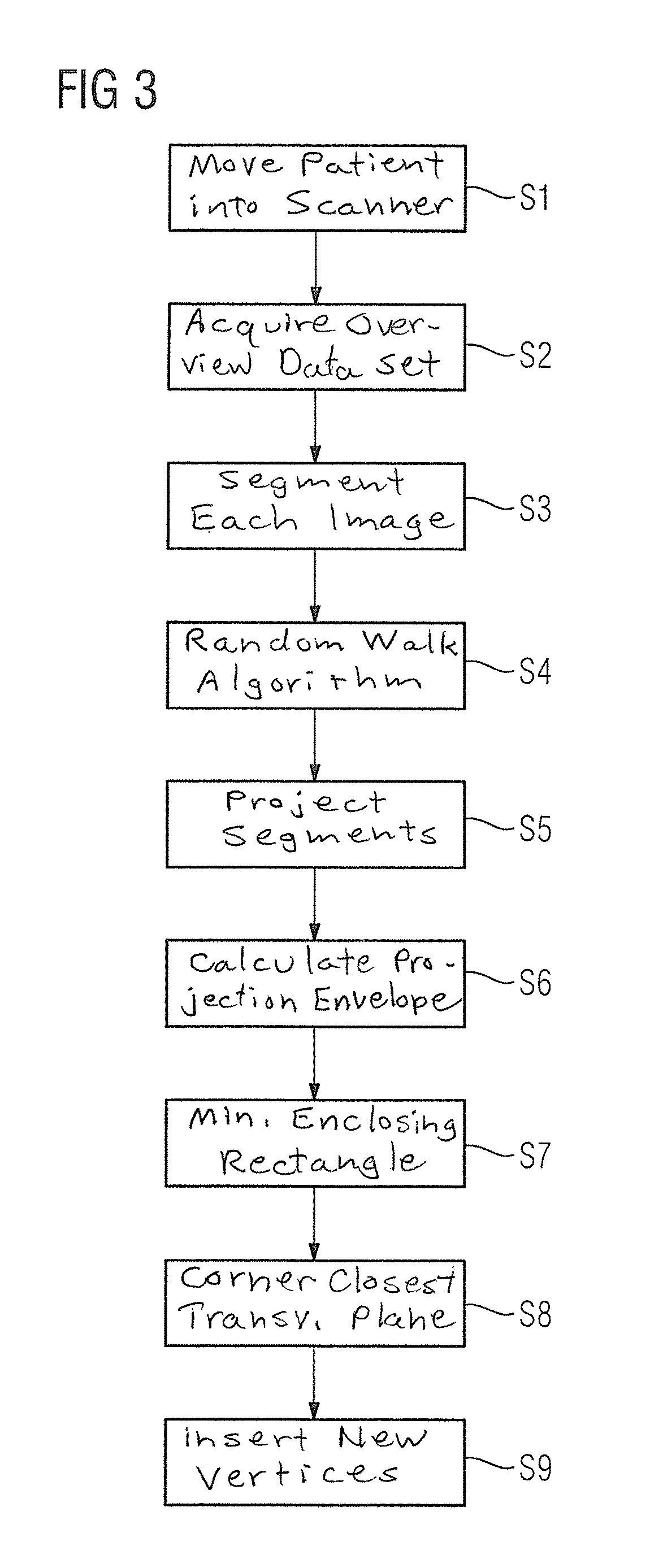Method and magnetic resonance system for automated determination of an acquisition volume related to an examination region for the acquisition of a magnetic resonance data set
a magnetic resonance and automated determination technology, applied in the direction of magnetic measurement, instruments, nmr measurement, etc., can solve the problems of essentially only cuboid volume being excited, no longer delivering any contribution, and almost no contribution from tissue outside the acquisition volum
- Summary
- Abstract
- Description
- Claims
- Application Information
AI Technical Summary
Benefits of technology
Problems solved by technology
Method used
Image
Examples
Embodiment Construction
[0050]FIG. 1 shows a magnetic resonance apparatus 1 that has a magnet unit (scanner) 2 as well as a control unit 8. Although the magnet unit 2 is designated generally, it is composed of a number of components. For example, it includes three gradient coils 4, an excitation coil 5 to generate RF pulses, and a coil 6 to generate the basic magnetic field B0.
[0051]A patient who is moved into the magnet 2 via the opening 7 can be positioned with positioning aids so that the examination region—typically the head or a defined organ, for example the liver, the kidneys or the prostate—lies in the homogenous region of the basic magnetic field B0.
[0052]For better orientation, a convention exists for naming primary slice planes that are in particular used in the acquisition of first overview images. The transverse plane 12 lies orthogonally to the longitudinal axis of the patient and divides said patient into an upper part and lower part. The sagittal plane 13 transects the patient in the middle...
PUM
 Login to View More
Login to View More Abstract
Description
Claims
Application Information
 Login to View More
Login to View More - R&D
- Intellectual Property
- Life Sciences
- Materials
- Tech Scout
- Unparalleled Data Quality
- Higher Quality Content
- 60% Fewer Hallucinations
Browse by: Latest US Patents, China's latest patents, Technical Efficacy Thesaurus, Application Domain, Technology Topic, Popular Technical Reports.
© 2025 PatSnap. All rights reserved.Legal|Privacy policy|Modern Slavery Act Transparency Statement|Sitemap|About US| Contact US: help@patsnap.com



